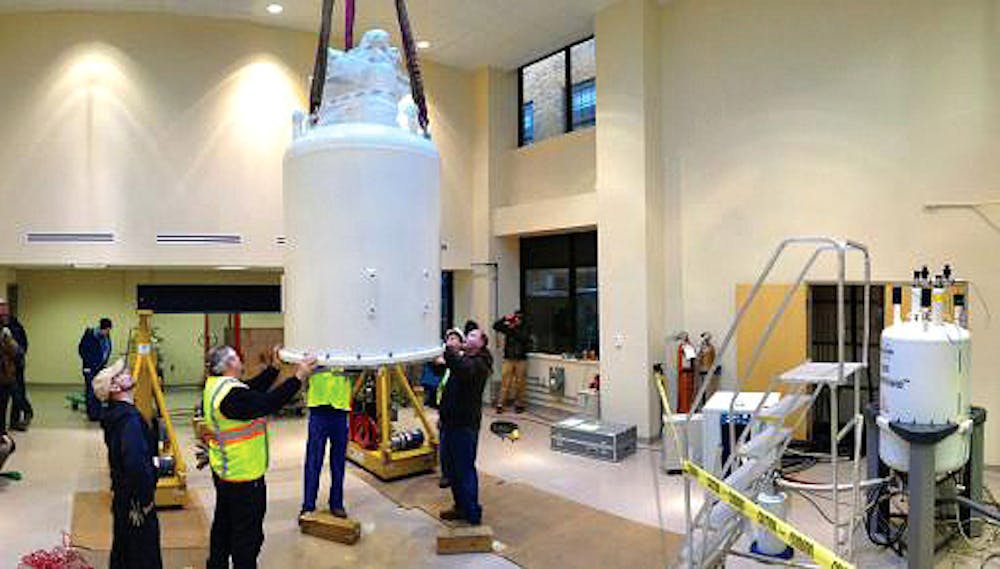While students struggle to stay warm, researchers in the Structural Biology Core Facility are preparing to cool a new device to below minus 454 degrees Fahrenheit. The $2.9 million instrument will greatly expand the University’s capacity to study life at near-atomic levels, according to a University press release.
The instrument is one of the strongest of its kind in the country, with a magnetic field strength of 19.97 Tesla, the unit used to measure magnetic flux density. At the core of the instrument is a large magnet composed of 100 miles of wire bathed in liquid helium and surrounded by liquid nitrogen. The instrument, which weighs 3.8 tons, was lifted by crane through the roof of the facility at 70 Ship St. Feb. 1, according to the press release.
Within the Ivy League, Brown’s device, which is expected to run constantly, is now surpassed in magnetic strength only by a 21.1 Tesla instrument shared by Harvard and the Massachusetts Institute of Technology. By comparison, a typical hospital magnetic resonance imaging machine operates at around 1.5 Tesla. The super-cooled temperatures allow the magnet to maintain such a strong field.
The new instrument allows “completely different types of research,” said Wolfgang Peti, associate professor of medical science. He likened the new instrument to a “Porsche” compared to the previous instrument, which he compared to a “Chevy.” Peti and other Brown researchers previously had to travel to Brandeis University for days at a time to access a similar tool, he said. Experiments using the device can take several days, he added.
Peti worked with Provost Mark Schlissel P’15 to secure funding for the magnet, which was paid for by anonymous donors. Peti said the University is looking to expand the core facility even further with a third instrument at midrange strength and added that Brown may be investing in structural biology, the study of biological molecules like proteins, because it often has immediate practical applications despite its focus on basic mechanisms. The field was historically crucial in developing the first drugs to fight human immunodeficiency virus, he added.
Once the University establishes the Structural Biology Core Facility as a major research center, it could receive federal funding, Peti said. The research group currently includes about 30 people, he said. The University also plans to sell time with the new instrument to other institutions, including the University of Rhode Island, according to the press release.
Nick Fawzi, assistant professor of medical science, cited the “world-class” instrument as one of the reasons he joined the University’s faculty. It is “going to be a really great tool to do really good work,” he said. Before coming to Brown, he used a similar instrument to study the protein aggregation implicated in Alzheimer’s disease. He was first author on the resulting paper, published in the journal Nature. He said he hopes to expand upon those results at Brown by studying protein aggregates in Lou Gehrig’s disease and a form of dementia.
It will take three weeks to charge the magnet, and it will be an additional three months before it is fully operational, Peti said. In the meantime, Peti said he hopes it will inspire undergraduates to join the research effort.
Due to an editing error, a previous version of the summary deck for this article incorrectly described the magnetic field of a new device as “frigid.” In fact, the magnet itself will be cooled. Magnetic fields do not have temperatures. The Herald regrets the error.

ADVERTISEMENT




